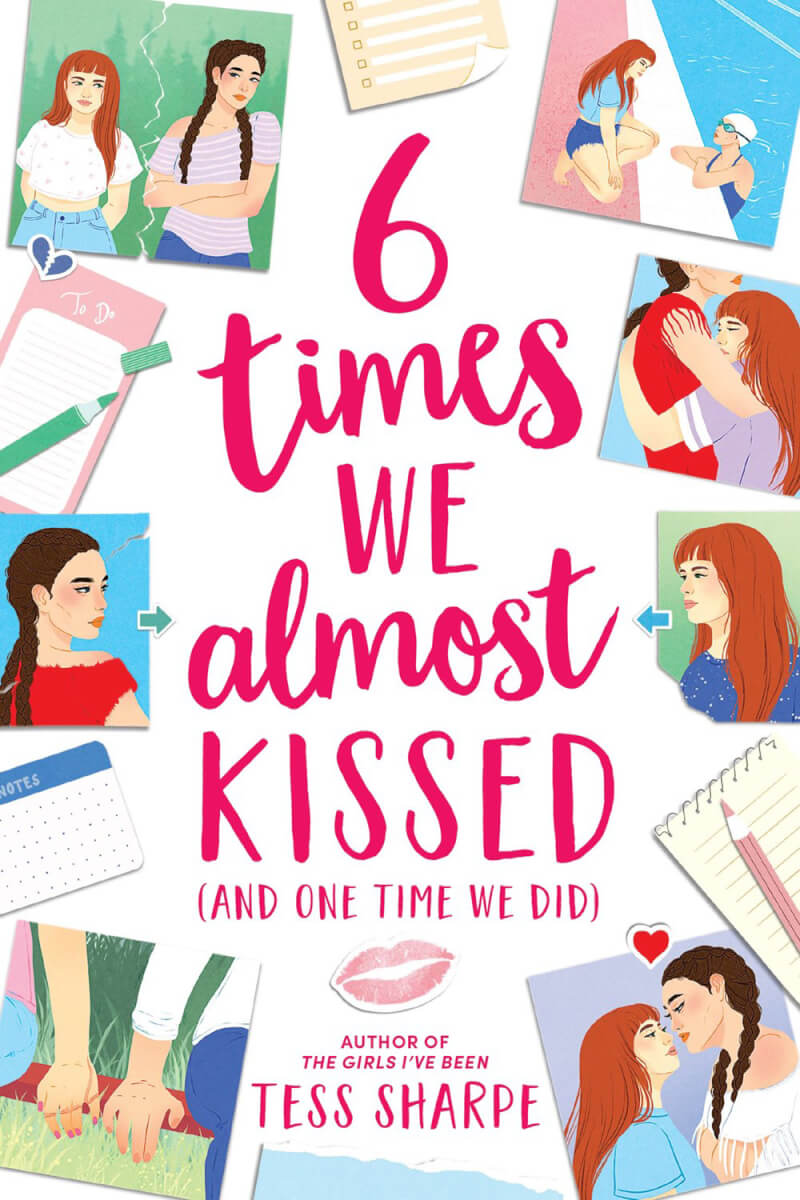Names often play a pivotal role in stories—and like many aspects of fiction, their importance is reflected in the real world. The novels of award-winning young adult author Darcie Little Badger draw on the power of names: In Elatsoe, Little Badger’s 2020 debut, the titular character carries the name of a legendary ancestor. Little Badger’s new novel (and prequel to Elatsoe) employs the same convention: Sheine Lende, which translates to “sunflower,” is both the title and the Lipan name of Shane, the book’s protagonist.
Little Badger explains that, in her Lipan Apache tribe, “names were given to a person when they’d grown up enough that their personality and other aspects of them had developed, so it’s a coming of age thing. I got my name after I graduated high school.”
Sheine Lende tells the story of 17-year-old Shane, a Lipan Apache girl in 1970s Texas. Including the diacritical marks that indicate pronunciation, Shane’s Lipan name is spelled Sheiné lénde, but the marks were omitted for the official title. When considered in the context of the story, this difference illuminates much of what Little Badger explores in the novel about names, language and the erasure of native peoples.
“I wanted Shane to be named after a sunflower, and there were a couple of different ways that we could have spelled it. We eventually settled on Sheiné lénde,” she says. “Then I learned from my editor that apparently, the system that’s used to distribute books to booksellers, etc.—it’s really not set up to take diacritical marks. Unfortunately, that means that we had to take off the diacritical marks in the title. It was interesting, because part of the book is Shane learning how to say her name. So it was sad that we couldn’t have the faithful pronunciation indicated in the title itself. But throughout the book, you see the diacritical marks are there. That’s the way it should be,” Little Badger says, as she explains the correct pronunciation (phonetically, it’s close to SHAY-neh LEN-day).
“The Lipan language is currently in a revitalization process,” Little Badger explains. “Lots of people are working on trying to not just fill in holes in our language, but to teach the next generations how to speak it.”
“With Shane,” Little Badger continues, “she does feel embarrassed that she can’t really pronounce her own name. It’s almost like she can’t wrap her head around who she really is. And that makes her wonder, ‘Maybe that’s not me.’ It was important for me to highlight that.”
Shane lives with her mother, Lorenza, and her little brother, Marcos. The family has spent the last several years rebuilding their lives after a devastating flood took their home, community and worst of all, Shane’s father and paternal grandparents.
Now, living far from “la rancheria de los Lipanes,” the community in which they used to live that was composed mostly of Lipan households, Lorenza and Shane scrape by however they can. Lorenza, who is a gifted tracker, offers search and rescue services to local families. Along with their two well-trained hounds, Lorenza and Shane also have the help of a powerful secret weapon: the ghost of their dog Nellie, brought back through their ancestral gift.
To Shane, her mother is the truest rock Shane has had since the flood. But when Lorenza accidentally steps into a wild fairy ring and vanishes while looking for a pair of missing siblings, Shane’s entire world turns upside down. The ensuing search for her mother forces Shane onto her own turbulent path of reconnection to her people, her family and herself.
Sheine Lende, with its animal ghosts, fairies, vampires and other mythological figures, is firmly rooted in genre fiction. But each fantastical element is anchored by very real and historic truths. Even in a magical version of the world, natural disasters are as unavoidable as carnivorous river monsters, and Shane and Lorenza feel they must hide their sacred abilities as they navigate systems of oppression augmented by the dominance of white European magic systems.
“The cool thing about writing fantasy is that you can use a lot of different tools to present what you want to say about the world,” Little Badger says. “For example, I studied invasive plant species in the United States when I was in college, and they’re called ‘invasive’ because they cause ecological and/or economic damage to the environment that they’re growing in. So I was like, ‘Well, these fairy rings and fae people in the world of Elatsoe and Sheine Lende are extradimensional, so it’s almost like they’re being introduced to Earth. What if there are unintended consequences and they start to spread like an invasive plant?’”
The actions we take, often to our own benefit, and sometimes even with noble intentions, could potentially cause negative impacts that carry over into the future.
The role of the fairy rings and their environmental impact in the story contribute to a larger metaphor for collective responsibility and environmental stewardship. Though fairy rings are magical, it’s easy to draw parallels to real world stories of environmental destruction on Indigenous land, such as the heavily protested Dakota Access Pipeline construction at Standing Rock, or the similarly problematic Keystone Pipeline.
Little Badger hints at the importance of collective responsibility early on in the novel, when Shane’s mother comes down with the flu while on a mission. Despite needing help, she stops Shane from using a flare gun because there’s a risk of it starting a fire in the area, which has recently experienced a drought: “She’s thinking of other people in a wider context, but also there’s this acknowledgement that the land we live on is going to be the land that grandchildren and great-grandchildren live on. There’s one Earth. And the actions we take, often to our own benefit, and sometimes even with noble intentions, could potentially cause negative impacts that carry over into the future.”
“It’s especially hard,” she continues, “because a lot of times, it’s not just individual decisions. It’s the decisions made by corporations or by entire countries. It can make someone feel small and overwhelmed when they’re like, ‘Okay, well, I recycle all the time and I do all these things. And it’s just not enough.’ But I do think that, collectively, if we can move to a place where we take future generations and people who aren’t like us into greater consideration—that’s what Lorenza was trying to teach Shane—it’s always a positive thing.”
Little Badger’s unique approach to genre fiction has been described as Indigenous futurism, an artistic movement considers the histories of Native peoples and uses the past to inform reimagined or recontextualized stories and futures. Throughout Sheine Lende, Little Badger uses fantastical devices to create a fun house mirror reflection of her tribe’s experiences.
The Lipan Apache are not a federally recognized tribe, and there is no Lipan reservation. Search engines offer contradictory information about the tribe. Links to the tribe’s official website and history are brought up next to an article from the Oklahoma Historical Society, which speaks of the tribe in past tense, and claims “little of their culture remains.”
“That’s . . . definitely not true,” Little Badger says. “That’s a choice. It ties into the erasure that Sheiné lénde shows.” Little Badger explains that before the Republic of Texas acquired statehood, “there was a ‘treaty of peace and perpetual friendship’ that Texas made with us. But then Texas became a state. Government officials did talk about potentially making a reservation for the Lipan Apache outside of the state of Texas, but unfortunately—well, they would consider us defiant, but we just couldn’t be rounded up. We couldn’t be captured. So they decided to do an elimination extermination campaign instead.”
By the late 1870s, Congress had made it illegal for any Indians to exist freely in Texas. Without a reservation, the Lipan Apache were among the Native peoples who suffered from this lack of recognition. “Until around 2021, we had no tribal land, so essentially we’d always be one disaster or unpaid bill away from losing our homes and having to start over somewhere else in Texas. I’ve heard people call us ‘disenfranchised natives,’” Little Badger says, referring to the fact that Native groups without tribal recognition from the U.S. Bureau of Indian Affairs lack rights given by the federal government.
“With Sheine Lende, so much of it is about that struggle to survive on land that has been, according to the United States government, taken away from you, on which you don’t even exist,” Little Badger adds. Towards the end of the novel, Shane enters the land of the dead, “almost like she is drawn to the thought that she belongs with the dead.” While a physical concept in Sheine Lende, the underworld also “represents Shane’s mental health and the way she sees herself and her people.” This fever dream sees Shane wandering through enchanted deserts that transition into prehistoric tundras. She encounters strange and terrifying beauty, confronting extinction and memory.
“It’s her struggling against that urge to give into despair and remain there with the dead, which eventually she overcomes by thinking of her family out there waiting for her—and a hope for the future, that those who remain need her to be with them and she needs to be with the living for herself,” Little Badger says. “It’s my meditation on what it means to be a disenfranchised native who is so erased by the law, by the military, by history, by books, by everyone outside of your community.”
Ultimately, “Shane finds strength by looking within herself and her community.” It’s this final sentiment of turning toward living, hope and the people who need you and nourish you, that most fully embodies “futurism,” and it’s where Shane embodies her namesake. At the end of Sheine Lende, her family’s grief has not been magically healed, and the ripple effects of colonialism are far from being calmed. But on the book’s final page, there is a note: “This is not the end.” In that message, there is a fervent reminder of hope, if only one remembers to turn, like a sunflower, toward the light.


















